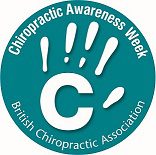The Reading Chiropractor cares for carers!
By 2037, it’s anticipated that the number of carers in the UK will increase to 9 million, and three in five of us will be carers at some point in our lives.[1] For many carers physical activity such as lifting is a significant part of their daily routine. However, not all carers will be aware of their back when looking after someone.
New research from the British Chiropractic Association showed that lifting and carrying can trigger back pain for more than half (55%) of people in the South East, and this number could even be higher for those carers who are often putting additional stresses and strains on their bodies.
Although paid carers may receive training on how to protect their backs during the physical aspects of their work, many unpaid carers, of which there are 6.5 million in England and Wales[2], may not receive any training or information about back care.
To coincide with Back Care Awareness Week (5 – 9 October) The British Chiropractic Association (BCA) The Reading Chiropractor has developed the following simple tips for all carers to help them whilst they’re helping others.

back care awareness
Golden rules for carers
- Think ahead – assess each situation and look for the best and easiest way to achieve the desired result, this may mean using any available equipment whether it be for specialist lifting or a simple sack barrow for moving boxes of supplies.
- Follow the weight – always try and face the direction in which you want to carry any weight – your body is strongest when you are square on to the weight.
- Take care when lifting – never lift while twisting from the waist. Bend your knees, try to have a relaxed, straight back and if possible, brace your abdominal muscles. For added stability make sure that your feet are about a shoulder width or more apart before lifting.
- Supportive shoes are essential – wear good, soft-soled shoes that are supportive and have a good grip on the ground.
- Take regular breaks – if doing a repetitive task, take a break every 20 minutes and do some simple stretches to relax your muscles.
- Ask for help – if in a home setting looking after a relative or friend there are many local agencies and charities who can assess and advise on what equipment or help you may need. Don’t carry on putting your body at strain. Explore all avenues of assistance. If you are provided with any equipment, make sure you are given training on how to use it.
- Ask for training – if in a formal setting make sure you have been properly trained in good lifting techniques and on any equipment you are using.
Carers – Straighten Up
David Woodhouse from The Reading Chiropractor comments:
“Carers spend long periods of time on their feet and put a lot of strain on their bodies, from lifting and assisting the person they are caring for, to moving equipment. Even though our bodies are very well adapted to a variety of tasks, carers need to be particularly careful not to overload themselves and put their backs at risk.”
“Formal care settings should have lifting and moving equipment available and staff should always make sure that they have been trained in the proper use of all equipment. Home carers should make sure they receive home assessments for the person they are caring for as equipment can often be loaned out – this will require appropriate training for proper use.â€
The Reading Chiropractor recommends a very simple three minute exercise routine entitled ‘Straighten Up UK’ from the British Chiropractic Association (BCA) has developed which is really easy to incorporate into daily life to help strengthen the spine and improve posture. The exercise routine can be accessed on the BCA website here: http://bit.ly/straightenupuk
[1] https://www.carersuk.org/news-and-campaigns/press-releases/facts-and-figures, and https://carers.org/about-caring






